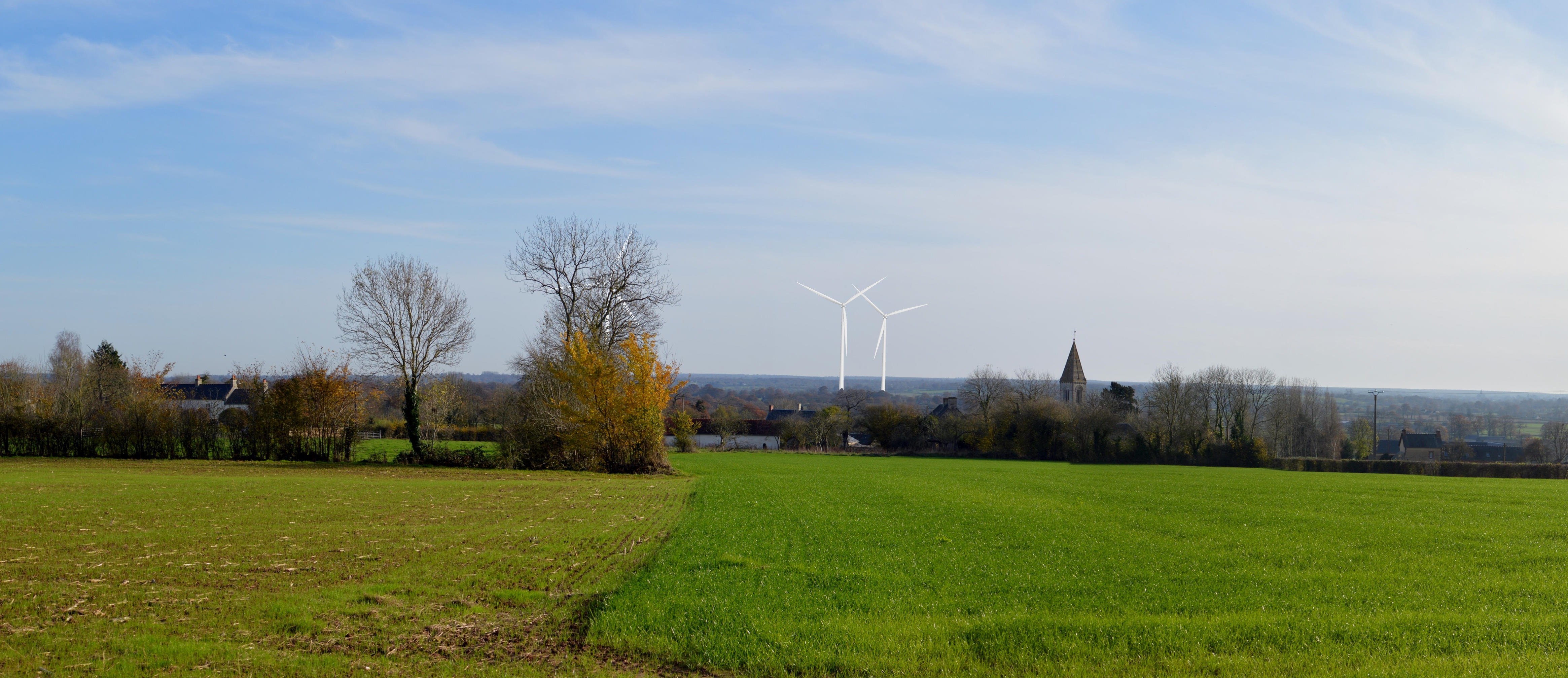Visualization
Visualization
HRAFNKEL has been realising visualizations for wind power projects for 15 years. In addition to projects in France, visualizations have also been created for several projects in Germany and Greece. HRAFNKEL's colleagues usually take the pictures themselves on site. This improves the understanding of the special features of a site to be visualised. Complementary to the viewpoints defined by the landscape architect, additional views of interest are discovered during the on-site visits.

Method of Visualization
Visualisation is a photogrammetric process that serves to show how the wind farm will appear in the landscape. The landscape is represented by a geo-referenced series of photographs taken by Hrafnkel. The focal length is 54 mm (equivalent to 24 x 36 mm), which renders the perspective of the human eye.
The wind farm is visualised using the photogrammetric module VISUAL of the WindPRO program suite. The virtual wind turbines are positioned on a gridded digital elevation model, that moreover serves to finely adjust the attitude of the panoramic series. A visualization destined for authorising, typically comprises an azimuthal sector of 120 degrees, the current recommendation of the Environmental Protection Agency. The azimuthal and elevation sectors may be chosen freely, for instance for rendering the co-visibility of the wind farm and a cultural or natural monument.
First, wire-models of all the wind turbines are superimposed onto the pre-construction scene, no matter whether the turbines are masked by obstacles or not. This facilitates the identification of all of the wind turbines in the scene and their attribution if several wind farms are visible. Finally, the wind turbines are rendered realistically, to typically show all wind turbines up to 20 kilometres from the vantage point.
Transects
Vertical terrain sections, so-called transects, may complete a folder, to corroborate why a certain wind turbine or a group of turbines appear visible from the vantage point or not. Hrafnkel supports both client and the landscape architect concerning the need for transects and their extend and attitude.
